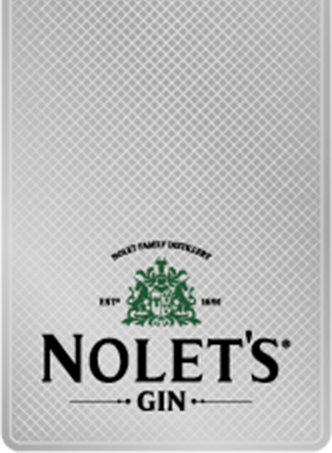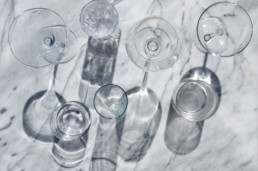Month: February 2019
Is This the Right Glass for My Cocktail?
For a well-stocked home bar having the correct glassware is essential, but sometimes confusing. For instance, does gin and tonic belong in a Collins glass, a Copa Balon (Balloon) or highball? And more importantly, does it matter? In the truest sense, the rules around glassware are a pure example of form following function. There are some basic tenants in glassware that affect the quality of the drink, and there is whimsy. In this article, we have narrowed the essentials down to four basic shapes, which are detailed below with some guidelines on what to look for and what kind of cocktails fill them.
Size matters, and so does shape. The surface area at the top of a glass determines how that vessel accommodates ice and retains carbonation. The length of the stem or thickness of the foot determines whether the liquid within will remain cold or should be warmed by your hands. The shape can hold the aroma vapors, or let them out, have room for a slow melting ice block or a mountain of crushed ice intended to dilute.
BALLOON
The large Balloon, Copa de Balon or Burgundy glass is a big bowl atop a long stem, perfect for holding on to without warming the beverage within. This is fast becoming the ONLY way to sip a gin and tonic. On the world stage, this vessel is the norm, and the United States is quickly following suit. The merit of the “copa serve” is that the balloon bowl contains the aroma of the gin’s botanicals while accommodating an array of garnishes and ice, keeping it cold to without much dilution. The Copa is also useful for a luscious burgundy wine or a trendy Summer spritz.
COUPE
The coupe glass, designed for champagne in the 17th century is widely popular and out-serves the traditional Martini glass because the balance is better and doesn’t spill as easily as the eponymous V. Coupes are perfect for cocktails served “up”... that is, chilled without ice. These drinks are typically shaken or stirred with ice before straining them into a chilled glass for serving. When selecting a coupe consider that the cocktail going in is generally spirit-forward, and should, therefore, be on the small side of the spectrum. This format is perfect if you subscribe to the famous barman, Harry Craddock’s adage that "The way to drink a cocktail is quickly, while it's still laughing at you." With that in mind, a small 5 oz. coupe or a deeper relative of the coupe, the Nick & Nora glass have both retro style and versatility for both spirits and champagne.
HIGHBALL
“As a bartender, I would say 90 percent of my drinks were poured in a highball glass,” estimates John Sergentakis, regional sales manager for NOLET’S Gin. For this chimney-shaped glass, the sweet spot is a 12-14 oz capacity which is versatile for fizzes, gimlets, rickeys, swizzles, bloody Mary’s and any drink that calls for ice or crushed ice (including Tiki drinks). While there is a difference between Highball and Collins glasses, for a home bar, the difference is negligible.
ROCKS
There are “rocks” and “double rocks” (also called old fashioned and double old fashioned) glasses that are used mainly for cocktails that are built right in the glass. Anything “neat” or on the rocks generally is served in a rocks glass. Think a Negroni, Old-Fashioned, Manhattan or sour, that are all appropriately made in heavy-bottomed short glasses. The double rocks is most versatile (measuring about 12 oz.). The pour for Scotch won't fill it to the brim, but in the case of a Margarita or a sour mixed with fruit juices, the double rocks is appropriate. Also the best option for large format, slow-melting craft ice blocks, and spheres.
All the other glasses, like snifters, flutes, copper mugs, and most other drink-specific cups are particular to personal preference. As a home bar expands and hones in on the cocktails most frequently made, there will be a plethora of tools and accessories to stock the bar with in addition to the essential four essential shapes.


